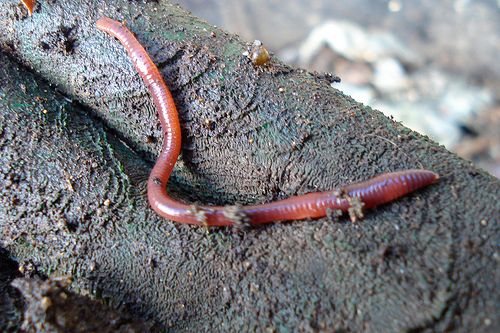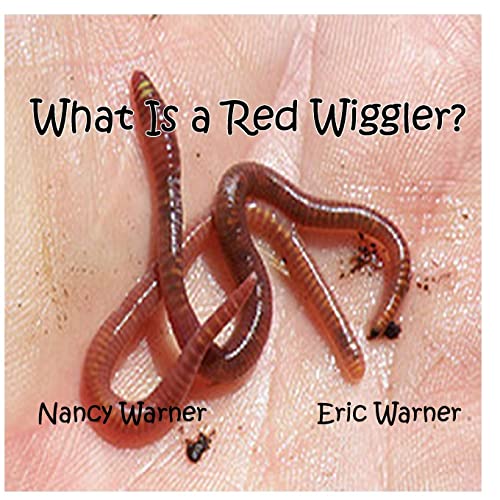Stock Up on Gear with Lake Hickory Bait for Your Next Trip
Stock Up on Gear with Lake Hickory Bait for Your Next Trip
Blog Article
Open the Keys of Red Wigglers: Your Overview to Composting Success
The integration of red wigglers into composting methods provides a considerable possibility for boosting dirt health and wellness and promoting sustainability. Comprehending their needs and behaviors is crucial for maximizing their possibility, from establishing up a proper worm bin to feeding them the right products.

What Are Red Wigglers?
(Red Wiggler Express)Red wigglers, clinically called Eisenia fetida, are a species of earthworm largely used in composting due to their remarkable capacity to break down raw material effectively. These worms are characterized by their reddish-brown pigmentation and a segmented body, generally gauging in between 3 to 4 inches in length. Unlike other earthworm varieties, red wigglers grow in abundant, natural environments, making them ideal for vermicomposting systems.
Native to North America, they are typically discovered in rotting leaves and compost heaps, where they play a crucial role in nutrient recycling. Their adaptation to living in a moist, aerobic atmosphere enables them to consume big quantities of organic waste, simplifying right into nutrient-rich spreadings that improve soil health.
Red wigglers replicate swiftly, with a solitary worm capable of producing several cocoons each week, each consisting of numerous hatchlings. Recognizing the biology and behavior of red wigglers is important for maximizing their capacity in composting applications.
Benefits of Utilizing Red Wigglers
Using the power of red wigglers in composting offers various benefits that improve dirt health and wellness and advertise lasting waste monitoring. These remarkable organisms efficiently break down organic matter, transforming kitchen area scraps and lawn waste right into nutrient-rich vermicompost. This completed item is incredibly advantageous for plant growth, as it improves dirt structure, increases moisture retention, and improves nutrition accessibility.

(Red Wiggler Express)Furthermore, the visibility of red wigglers in your composting system can increase the composting procedure, creating top notch garden compost in a portion of the time contrasted to standard techniques. The castings produced by these worms are also including beneficial bacteria that additionally improve the soil ecosystem.
Establishing Up Your Worm Bin
Creating a reliable worm bin is a straightforward procedure that can considerably boost your composting efforts. The primary step is picking an appropriate container. Worm containers can be made from plastic storage containers, wooden boxes, or readily offered worm containers. Guarantee the container has sufficient water drainage and ventilation openings to maintain ideal moisture degrees and airflow.
Following, prepare the bedding material, which works as Check Out Your URL the worms' environment. A mix of shredded paper, cardboard, and coconut coir functions well, giving a comfy setting for the worms. Go for a bed linens depth of concerning 4-6 inches. Dampen the bed linen lightly, guaranteeing it looks like a wet sponge without excess water pooling at the bottom.

Feeding Your Red Wigglers
To make certain the health and wellness and efficiency of your red wigglers, it is vital to offer them with a well balanced diet regimen that fulfills their nutritional needs. Red wigglers grow on a diverse array of natural products, which not only supply essential nutrients yet additionally advertise effective composting.
Start by incorporating cooking area scraps such as vegetable peels, fruit cores, and coffee grounds. Stay clear of citrus fruits, onions, and garlic, as these can be damaging to worm health and wellness. Additionally, present shredded paper, cardboard, and completely dry fallen leaves to create a well-aerated atmosphere.
Feeding frequency need to be checked; normally, worms can take in half their body weight in food weekly. It is important to avoid overfeeding, as excess food can bring about undesirable smells and draw in insects. An excellent technique is to include food in small amounts, enabling worms to process it before introducing extra.
Maintaining dampness degrees is additionally important; the bedding needs to perspire however not soggy. Last but not least, be certain to consistently examine the temperature and pH degrees of the bin to make certain an optimum environment for your red wigglers, inevitably enhancing their composting performance.
Harvesting and Utilizing Garden Compost
A successful composting process with red wigglers culminates in the abundant, dark garden compost referred to as vermicompost, which can dramatically boost soil health and plant development. Harvesting this nutrient-dense material commonly happens every 3 to 6 months, depending upon the size of your system and the amount of raw material being processed.
To gather, delicately separate the compost from the worms and any undecomposed products. One efficient method involves relocating the components of the bin away and including fresh bed linen and food to the void, motivating the worms to migrate. After a few days, the garden compost can be gathered from the opposite side.
It is vital to utilize vermicompost appropriately to optimize its benefits. It can be made use of as a top dressing for yard beds, mixed right into potting dirt, or brewed right into a nutrient-rich fluid fertilizer known as "worm tea." This application method assists to deliver important nutrients straight to plant roots, promoting much healthier development. By integrating vermicompost into your horticulture program, you not only reuse natural waste but additionally produce a thriving ecosystem that sustains sustainable horticulture methods.
Final Thought
In summary, red wigglers work as outstanding allies in composting efforts, changing natural waste into nutrient-rich vermicompost (Red Wiggler Express). Their unique organic qualities and efficient waste handling capabilities add dramatically to sustainable horticulture techniques. By understanding the ideal problems for their habitat, feeding demands, and garden compost harvesting strategies, gardeners can enhance soil wellness and promote plant vitality. Accepting vermicomposting not just lowers land fill waste but also promotes an extra eco responsible approach to gardening and resource administration.
Report this page